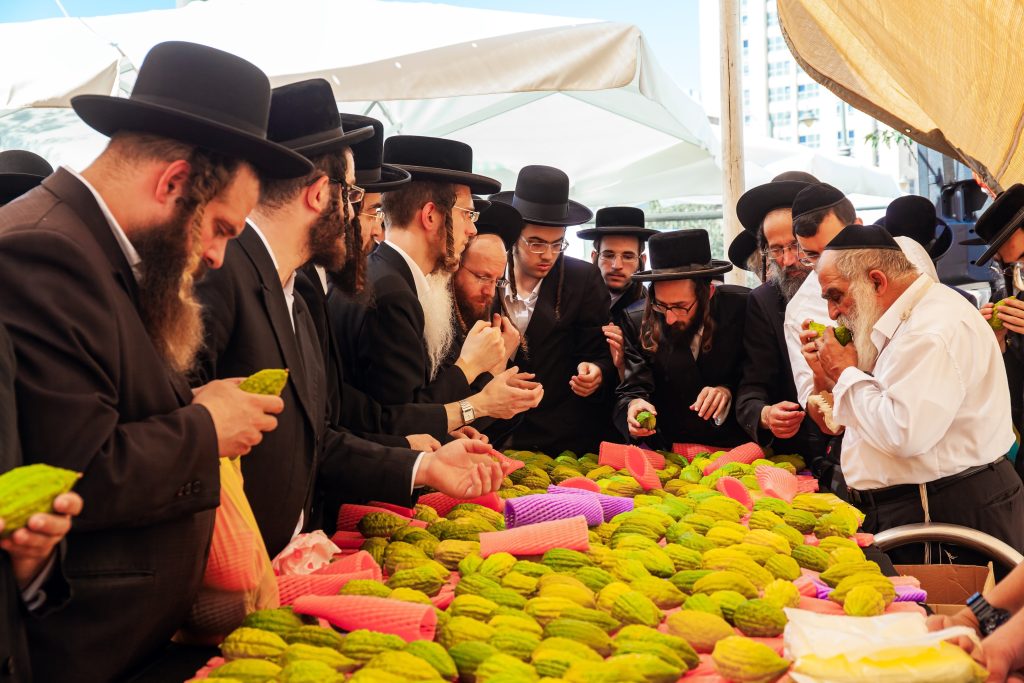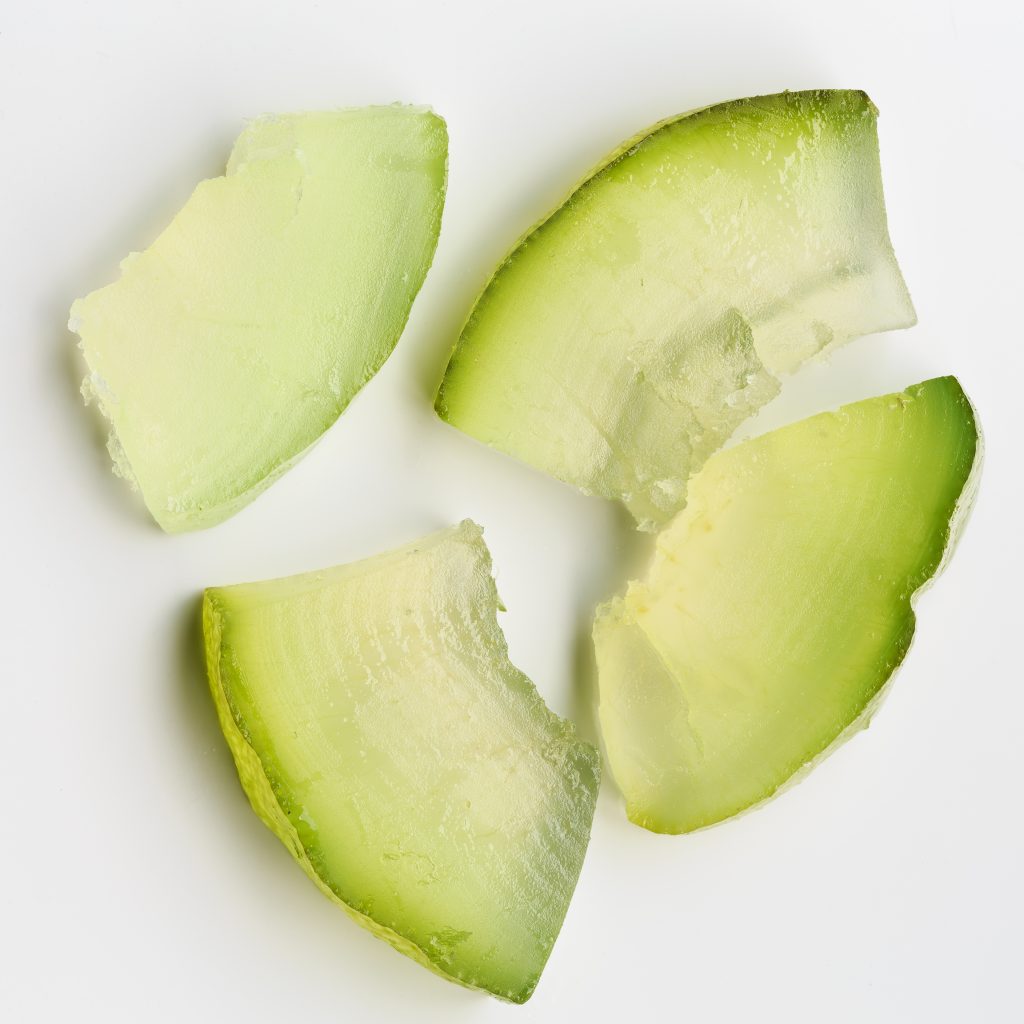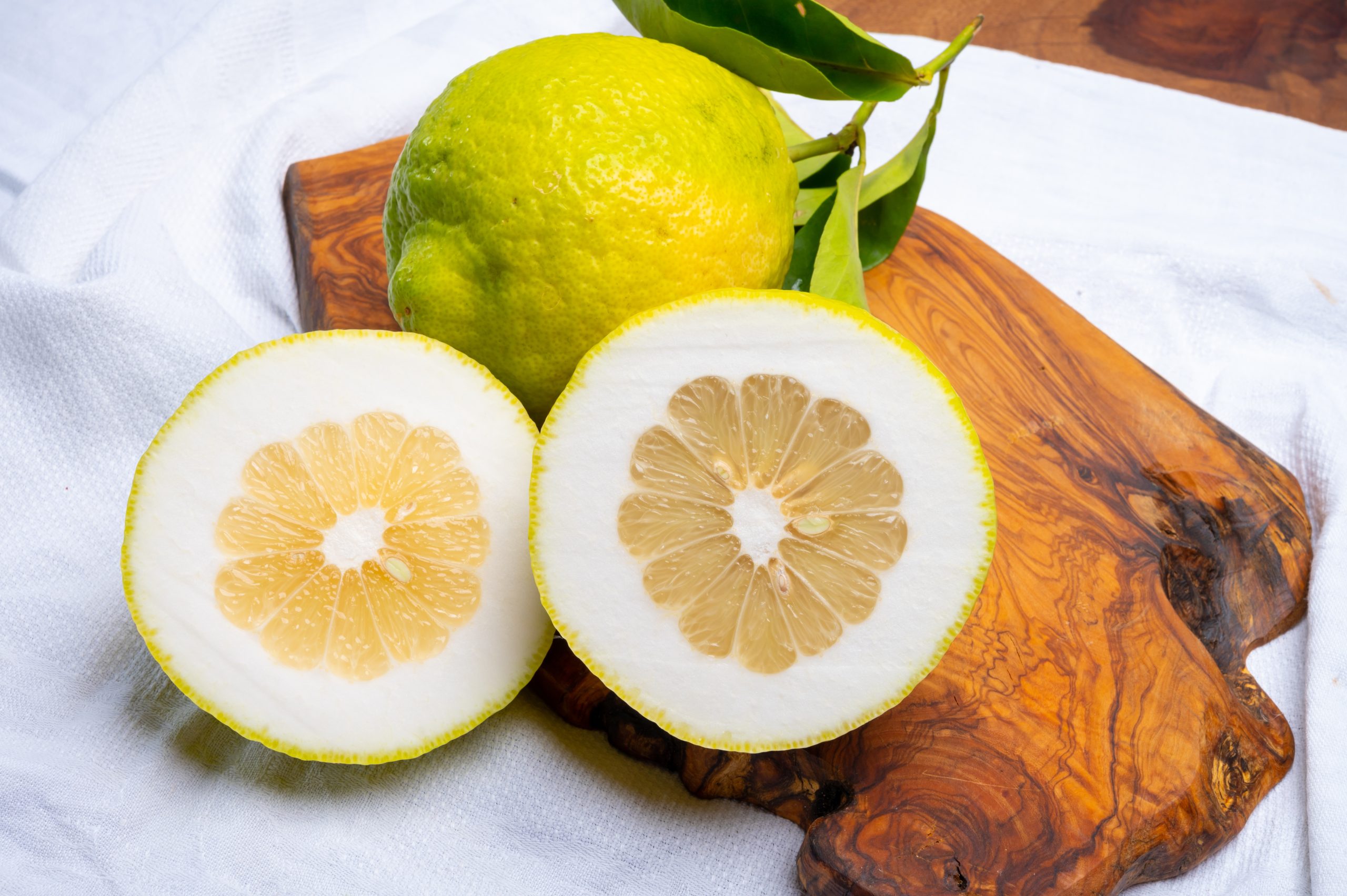Citron is a large citrus fruit prized for its highly aromatic peels. Despite being lesser known than lemons and limes, citron is considered to be one of the first citrus fruits ever cultivated.
Table of Contents
What is Citron?
Citron (Citrus medica) is a large citrus fruit known for its intense and concentrated sour flavor. The skin of the fruit is rough and bumpy, and makes way to a thick layer of pith, leaving minimal room for the fruit’s flesh. Citron is also known as cedrate, cedro, turunj, hadar, and etrog.
Citron has many varieties, including the Japanese citron called yuzu and the Meyer lemon. The fingered citron, also known as Buddha’s hand, is another popular variety. As the name suggests, it’s an unusually shaped citron with many finger-like forms.

The History of Citron
Citron was originally cultivated in Asia, particularly in India and China. Eventually, the citrus fruit made its way to Europe by crossing the Caspian and Mediterranean Seas. Alexander the Great is said to be responsible for the spread of citron to the West, reaching countries like Italy, Greece, and Spain.
In Hebrew, it’s said that the etrog citron was used as an amulet for easing pains during childbirth, a weapon to throw at one’s enemies, and a source of political and economic clout. Citron is one of the main symbols for the Jewish festival of Sukkot, a celebration of the fall harvest. Jewish people also once used citrons in their religious rituals during the Feast of Tabernacles.
There are Italian carvings of people holding citrons in their left hands and lulavs (a frond of a date palm tree) in their right hands. This is a symbol of how the rhythm of life is connected to the land. Shaking the etrog and the lulav in six directions – forward, back, right, left, up, and down – creates a force field that shields and protects an individual from bad fortune and brings us blessings.
What Does a Citron Taste Like?
Like other citrus fruits, such as the lemon, the citron tastes sour when eaten raw. It consists mainly of a white pith and yellow or green skin, and barely has any juice or pulp. The rind tastes like lemon peel with a slight sweetness to it.
When cooked, it becomes sweeter and can be made into candied citron, similar to candied lemon and grapefruit peel.
How to Tell When Citron is Ripe
Selecting the right citron is vital for ensuring you don’t end up with a bland fruit with an overly bitter peel. Make sure to check the following characteristics as you pick out your citron:
| Color | When a citron is ripe, it will be bright yellow. Avoid fruits that are green or yellow-orange and any with blemished or moldy skin. |
| Size | Citron vary a bit in size since they can reach up to 8 inches (20 cm) long. Pick one that ranges between 4 and 8 inches. |
| Firmness | Pick a citron that is firm to the touch. If it feels squishy, that means it’s lost most of its ripeness and won’t be as pleasant as it should be. |
| Smell | Its smell is incredibly fragrant when ripe; avoid one if you can’t smell anything or if it smells strange. |
| Bruising | If you see citrons with bruises or moldy skin, don’t choose them. Always pick one with clear skin. If you can’t find any, it’s best to pick a citron that’s less ripe than an overripe or bruised one. |

Can I Eat Raw Citron?
Many people prefer using citron in its raw form as it’s primarily used for zesting. It’s usually added to salads, cooked into candies and jams, or infused into almost any drink. Its aromatic and lemony flavor adds a great twist to most beverages.
Citron Compared to Other Citrus
Let’s take a look at how citron compares to some of the world’s other popular varieties of citrus.
| Limes | Limes are smaller than citrons and are typically favored for their distinctively-flavored, sour juice. They’re also green, whereas citrons are yellow. |
| Lemons | Lemons are larger than limes but smaller than citrons. They’re similar to citrons in their color and taste. Both lemons and limes have thinner albedos than citrons. |
| Grapefruits | Grapefruits are yellow-orange or pink when ripe and have smoother skin than citrons. They’re also round and have a very thin albedo, whereas citrons are oblong and have a very thick albedo. Unlike citrons, grapefruits have a sweet and sour taste. |
| Tangerines | Tangerines are orange, round, and small, unlike citrons. Although their taste is sweet and robust, they’re less sour than citrons and don’t smell as fragrant as citrons do. |
| Pomelos | Pomelos are round, light green or yellow, and are generally around 25 cm in diameter but can range from 10 to 30 cm. They’re the largest citrus fruit in the world, making them bigger than citrons. Contrary to citrons, pomelos have sweet flesh. |
Cooking with Citron
Preparing citron is fairly straightforward; simply follow these three steps:
- Wash your citron thoroughly, then slice the fruit in half with a knife.
- Carefully scoop out the fruit’s flesh and seeds with a spoon, and set aside if you plan on using them.
- Slice the peel into strips or cubes, sized accordingly with your recipe’s directions.

Most recipes that include citrons are generally sweet, such as fruitcakes, fruit bars, candies, and cookies.
- Candied Buddha’s Hand Citron: This recipe is perfect for a sweet tooth. Some sweet and sour candy, great for a snack. All you need are some citrons, sugar, and water. It couldn’t be easier!
- Yuja Tea: Korean Citron Tea: This is a very traditional Korean recipe, generally made with yuzu citrons or citron marmalade. Its aroma and taste are distinctive, comforting and delicious. Perfect for winter, or add ice if you want it to be more refreshing.
- Real Old Fashioned Fruitcake: This cake is a classic, and everyone’s tried a slice at some point. Its fragrant spices and all types of dried fruits make it perfect for any day.
How to Store Citron
Citron is stored similarly to most other types of citrus, such as lemons and limes.
Feel free to leave citrons at room temperature. Try to use fresh fruit within a week after they’re purchased. Leaving the fruit in the fridge will help preserve the fruit even longer, up to 2-3 weeks.
Don’t leave the fruit in plastic bags since they stop air circulation, and don’t wash them before putting them in the fridge since any excess moisture will attract mold growth.
If you’ve made candied citron, put the fruit in a jar and store them at room temperature if you want to use them in a few weeks. Keeping them in the fridge will allow the candy to last up to six months.
Nutritional Benefits of Citron
Citron is rich in nutrients that offer a wide variety of health benefits. Vitamin C, potassium, and other minerals stabilize blood pressure, lowering the strain on the body’s arteries and helping blood circulation.
Essential oils and juices help lower gut acidity and the risks of heart disease and cancer. It’s ideal for people with chronic illnesses and acute pains.
Citron is also known to boost the immune system and can help to increase the production of white blood cells.
Where to Purchase Citron
Citron can be found in grocery stores internationally, especially during their peak season between November and January. Although widely distributed, citrons have much smaller harvest sizes, which sometimes makes them difficult to find.
Fortunately, premade candied citron is popular year-round, making it your best bet for trying this unique citrus fruit!

